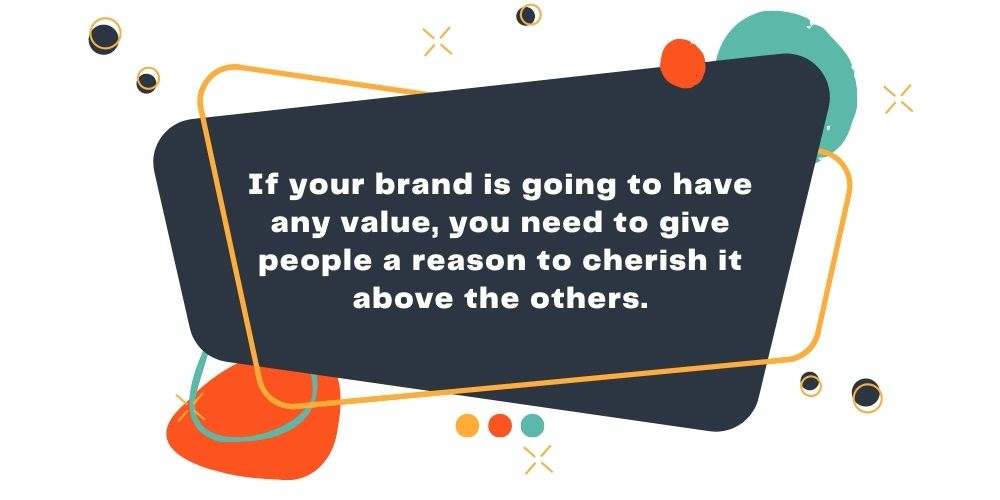Content Marketing: 7 Strategies for Building Brand Awareness
As any seasoned marketer is likely already aware, a strong company brand goes a long way toward finding success as a company. Just think about it. Some people just need to see a particular piece of fruit with a bite taken out of it plastered on a new product, and they’re already taking out their…
As any seasoned marketer is likely already aware, a strong company brand goes a long way toward finding success as a company. Just think about it. Some people just need to see a particular piece of fruit with a bite taken out of it plastered on a new product, and they’re already taking out their wallets. In the best circumstances, an identifiable brand will sell way more than any ad campaign.
While mainstream success like that obviously isn’t attainable for every company on the market, that doesn’t mean it isn’t worth pursuing a strong brand image. Having a brand that people trust and endorse to their friends is attainable if you put in the work for it.
But how do you go about doing that? Well, the possibilities are technically endless. But today, we wanted to focus on achieving a solid brand awareness through content marketing. This list of strategies should serve as a good jumping-off point for your company.

Determine What Makes You Unique
Before you start writing anything, the first step you need to take is to determine what makes you unique. Unless you came up with a new technology that’s going to take the world by storm, there are likely at least a few companies out there that are selling something similar to what you’re offering. That means you need to find your edge. What is it that makes you better than the competition?
Once you’ve nailed that down, you need to figure out how to portray that advantage to viewers. If your brand is going to have any value, you need to give people a reason to cherish it above the others. Maybe you pride yourself on your company’s dedication to quality, or your products have a feature that no one else offers. Regardless of what it is, it will be the thing that people will think of whenever they see your logo.
Research, Research, Research
Of course, the fun part comes next: researching your target markets. Giving your brand a unique value proposition means nothing if you try selling it to the wrong people. For example, if you have to mark up your price a bit to compensate for the robust materials you use to build your products, you don’t want to appeal to a crowd that only cares about saving money.
Since your brand is in its infancy, it’s okay to miss the mark a little. No one expects you to nail down the perfect target market immediately. Just make sure you don’t try to hit them all. No matter what it is you sell, we can all but guarantee you that not everyone wants it. Plus, even if they did, that would leave your brand with no identity because it appeals to everyone under the sun.
It’s a tricky line to walk. The critical thing to remember is in the beginning, the smaller the demographic, the better the brand image will be. This will make steps later in this process much easier to follow through with.
Start With the Basics
Now that you have a plan for your brand, it’s time to focus on how you can use content marketing to strengthen people’s awareness of it. The key is to start simple. We’d recommend creating a blog for your website. In each post, you can focus on basic, unbranded keywords that will gain people’s attention within your desired demographic.
The more niche the keyword, the more likely you’ll be to find some successful hits. If your business is location-based, express that within your keywords. This is also where you’ll want to work in your unique trait. If someone is looking for a specific feature you offer, it’ll be a match made in heaven.
Of course, this has all been about the keywords. But what about the content itself? This is where you can start to mention your brand slowly. Use most of the article to talk about the topic at hand. But at some point, try to talk about how your brand focuses specifically on that feature. You can even embed a link that will take them to an “About Us” page where they can learn more about you. Alternatively, you can possibly even directly link to a product page. Either way, you’ll be building your brand slowly but surely.

Diversify Your Portfolio
Even though blogs are an easy starting point, they shouldn’t be the only form of content you use. Unfortunately, not every target market necessarily enjoys reading articles. However, there’s likely a form of content they prefer, and a bit more research will key you into what it might be.
Social media posts, podcasts, and videos are just a few of the many other content types that could better fit your audience. The main reason we recommend starting with blogs is that you can combine that with SEO practices to build your company website’s credibility. Regardless of what you decide to go with, if you find a reliable way to deliver your message to your audience, your brand awareness will increase among that crowd.
Make Yourself Seen Through Stronger Brands
Probably one of the best ways to build your brand’s credibility is to have consumers see it with other brands they already trust. This could be similar companies or even celebrities. Obviously, you might not be able to get Neil Patrick Harris to endorse your brand-new product. However, a smaller-scale TikTok star who has a strong following of people who fall into your target market would be a much smarter choice.
This goes beyond ideas like influencer marketing, though. Other companies are great for spreading your brand around as well. If you don’t know any business owners personally who can help, you can reach out to others through places like LinkedIn and business-related Facebook groups. Of course, you’ll need to do some convincing to get a partnership to work. Typically, you’ll need to give them something in return. You can make a fair trade by finding ways to help them better their brand.
No matter which route you take here, it should result in you building your brand’s authority and spreading it to groups that might not have seen it before. Both of these are key factors in brand awareness.
Provide Friendly Reminders
Once you’ve put in the work to build a decent following around your brand, you need to try to keep it at the front of their minds. Even though credibility and outreach are vital parts of awareness, the most important factor is memorability. You aren’t going to have the influence that more prominent brands took years to build right away, so you need to ensure that past customers don’t forget about you.
You can most easily do this through friendly forms of following up. Email subscriber lists and retargeting ads are both great, and many companies have found success with them in the past. So you should definitely try them out.
However, with our focus on content, we can’t emphasize the importance of continually interacting with your followers on social media enough. Not every post or video needs to try to sell something either. Just being a constant source of entertainment is a good enough reminder that they haven’t bought from you in a while and should check out your store again.

Give Them a Reason To Come Back
As a final note, before we send you off to build your brand through content marketing, the primary way you develop a brand is to give people a reason to return. If your products aren’t as good as you claim, or they don’t offer users the unique value that you promised, no amount of following up will bring those customers back.
To have a solid brand, you need an equally solid product line to build it around. Failing to do this will make every other step in this list significantly harder.
